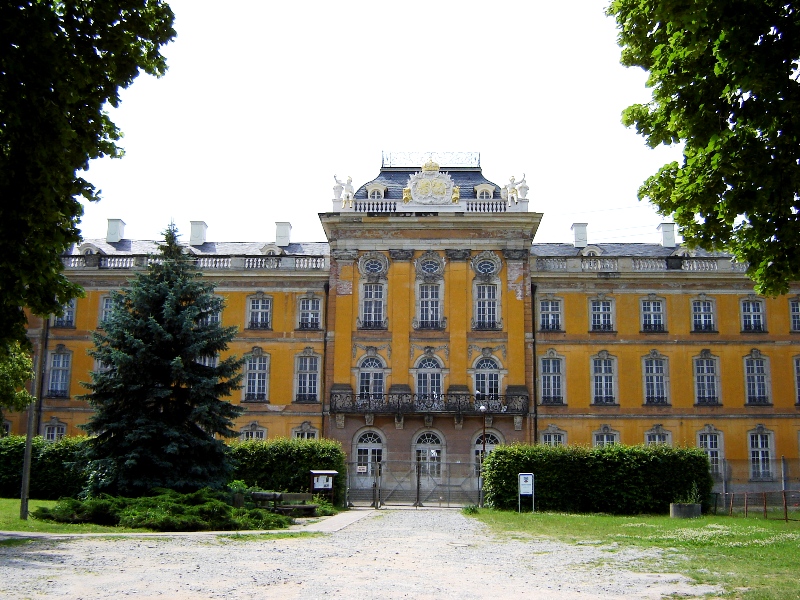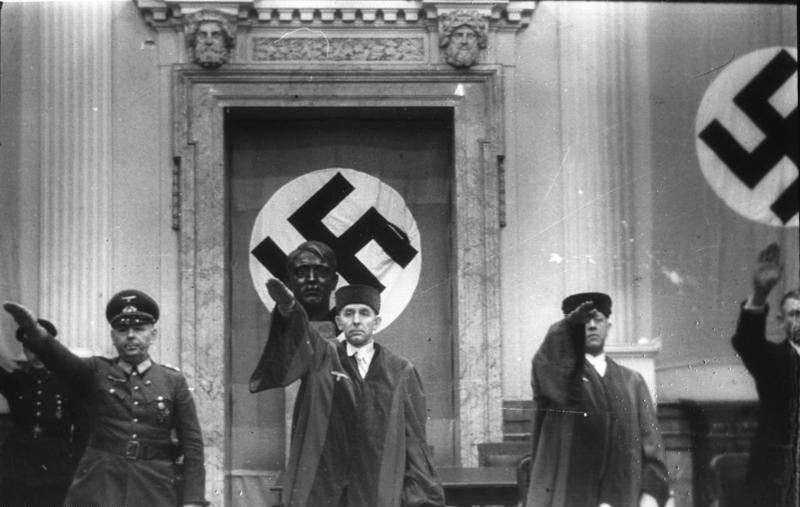|
Carl Gröpler
Franz Friedrich Carl Gröpler (22 February 1868, Magdeburg – 30 January 1946, Magdeburg) was Royal Prussian executioner (german: Scharfrichter) from 1906 to 1937.Blazek (2010). Responsible for carrying out capital punishment in the Prussian provinces, he executed at least 144 people, primarily by beheading with an axe, but also with guillotines. Gröpler was one of the most famous executioners in Germany. Life Franz Friedrich Carl Gröpler was a child of the railway worker and service man Heinrich Gröpler and his wife Auguste, born Anton, in Magdeburg. He was first a musician, then spent five years as a postal worker. Gröpler learned the horse butcher's trade and business and ran a laundry in Magdeburg named Aegir. Executioner He wore a traditional tailcoat, top hat, and white gloves.Blazek (2010), p. 63. Gröpler was first assistant to the main Prussian executioner Lorenz Schwietz. When the Prussian executioner Alwin Engelhardt was dismissed in 1906, Gröpler took over h ... [...More Info...] [...Related Items...] OR: [Wikipedia] [Google] [Baidu] |
Magdeburg
Magdeburg (; nds, label=Low Saxon, Meideborg ) is the capital and second-largest city of the German state Saxony-Anhalt. The city is situated at the Elbe river. Otto I, the first Holy Roman Emperor and founder of the Archdiocese of Magdeburg, was buried in the city's cathedral after his death. Magdeburg's version of German town law, known as Magdeburg rights, spread throughout Central and Eastern Europe. In the Late Middle Ages, Magdeburg was one of the largest and most prosperous German cities and a notable member of the Hanseatic League. One of the most notable people from the city is Otto von Guericke, famous for his experiments with the Magdeburg hemispheres. Magdeburg has been destroyed twice in its history. The Catholic League sacked Magdeburg in 1631, resulting in the death of 25,000 non-combatants, the largest loss of the Thirty Years' War. During the World War II the Allies bombed the city in 1945 and destroying much of it. After World War II the city belonged t ... [...More Info...] [...Related Items...] OR: [Wikipedia] [Google] [Baidu] |
Peter Kürten
Peter Kürten (; 26 May 1883 – 2 July 1931) was a German serial killer, known as "The Vampire of Düsseldorf" and the "Düsseldorf Monster", who committed a series of murders and sexual assaults between February and November 1929 in the city of Düsseldorf. In the years before these assaults and murders, Kürten had amassed a lengthy criminal record for offences including arson and attempted murder. He also confessed to the 1913 murder of a nine-year-old girl in Mülheim am Rhein and the attempted murder of a 17-year-old girl in Düsseldorf. Described by as "the king of the sexual perverts", Kürten was found guilty of nine counts of murder and seven counts of attempted murder for which he was sentenced to death by beheading in April 1931. He was executed in July 1931 at age 48. Kürten became known as the "Vampire of Düsseldorf" because he occasionally made attempts to drink the blood from his victims' wounds, and the "Düsseldorf Monster" both because the majority of his m ... [...More Info...] [...Related Items...] OR: [Wikipedia] [Google] [Baidu] |
Jan Valtin
Richard Julius Hermann Krebs (December 17, 1905 - January 1, 1951), better known by his alias Jan Valtin, was a German writer during the interwar period. He settled in the United States in 1938, and in 1940 (as Valtin) wrote his bestselling book ''Out of the Night''. Background Krebs became active in the Communist movement as a boy, when his father was involved in the naval mutiny that heralded the German Revolution of 1918–19. Career In 1923, he saw action in the failed Communist insurgency in Hamburg. Sometime after this he joined the German Communist Party, but was later expelled. Arrest In 1926, Krebs entered the United States illegally and moved to California. He spent 38 months in San Quentin State Prison for attempting to murder a merchant navy seaman during a brawl, then was deported to Germany in 1929. He worked as a seaman until 1934, when he was arrested and tortured, and acted as a witness for prosecution in a trial that brought to the conviction of a fellow ... [...More Info...] [...Related Items...] OR: [Wikipedia] [Google] [Baidu] |
Hamburg
(male), (female) en, Hamburger(s), Hamburgian(s) , timezone1 = Central (CET) , utc_offset1 = +1 , timezone1_DST = Central (CEST) , utc_offset1_DST = +2 , postal_code_type = Postal code(s) , postal_code = 20001–21149, 22001–22769 , area_code_type = Area code(s) , area_code = 040 , registration_plate = , blank_name_sec1 = GRP (nominal) , blank_info_sec1 = €123 billion (2019) , blank1_name_sec1 = GRP per capita , blank1_info_sec1 = €67,000 (2019) , blank1_name_sec2 = HDI (2018) , blank1_info_sec2 = 0.976 · 1st of 16 , iso_code = DE-HH , blank_name_sec2 = NUTS Region , blank_info_sec2 = DE6 , website = , footnotes ... [...More Info...] [...Related Items...] OR: [Wikipedia] [Google] [Baidu] |
Communism
Communism (from Latin la, communis, lit=common, universal, label=none) is a far-left sociopolitical, philosophical, and economic ideology and current within the socialist movement whose goal is the establishment of a communist society, a socioeconomic order centered around common ownership of the means of production, distribution, and exchange which allocates products to everyone in the society.: "One widespread distinction was that socialism socialised production only while communism socialised production and consumption." Communist society also involves the absence of private property, social classes, money, and the state. Communists often seek a voluntary state of self-governance, but disagree on the means to this end. This reflects a distinction between a more libertarian approach of communization, revolutionary spontaneity, and workers' self-management, and a more vanguardist or communist party-driven approach through the development of a constitutional socialist st ... [...More Info...] [...Related Items...] OR: [Wikipedia] [Google] [Baidu] |
Gommern
Gommern () is a town in the Jerichower Land district, in Saxony-Anhalt, Germany. It is situated approximately southeast of Magdeburg. On January 1, 2005, the municipalities Dannigkow, Dornburg, Karith, Ladeburg, Leitzkau, Menz, Nedlitz, Vehlitz and Wahlitz have been incorporated into Gommern. On January 1, 2008, Prödel was incorporated, and on January 1, 2009, Lübs was incorporated. Local council Elections in October 2005: Elections in May 2014: Dornburg Charles, Prince of Anhalt-Zerbst, had a new castle built at Dornburg near Gommern from 1674, which he gave to his brother, John Louis I, Prince of Anhalt-Dornburg. It was inherited by the latter's second son, Christian August, Prince of Anhalt-Zerbst. In 1747 he died and the castle burnt down in 1750. His widow, Johanna Elisabeth of Holstein-Gottorp, governed the principality of Anhalt-Zerbst for her son Frederick Augustus until 1752. She had the new castle at Dornburg built as her thirds from 1750, a lavish baroque pa ... [...More Info...] [...Related Items...] OR: [Wikipedia] [Google] [Baidu] |
Knacker
A knacker (), knackerman or knacker man is a person who removes and clears animal carcasses (dead, dying, injured) from private farms or public highways and renders the collected carcasses into by-products such as fats, tallow (yellow grease), glue, gelatin, bone meal, bone char, sal ammoniac, soap, bleach and animal feed. A knacker's yard or a knackery is different from a slaughterhouse or abattoir, where animals are slaughtered for human consumption. Since the Middle Ages, the occupation of "knacker man" was frequently considered a disreputable occupation. Knackers were often also commissioned by the courts as public executioners. Etymology The oldest recorded use of the word "knacker" dates to 1812, meaning "one who slaughters old or sick horses" and in 1855 "to kill, castrate", and is believed to be the same word as the earlier knacker/nacker "harness-maker" from the 1570s, surviving in 18th century dialects. The sense extension is perhaps because "knackers" provided farm ... [...More Info...] [...Related Items...] OR: [Wikipedia] [Google] [Baidu] |
Nigel Cawthorne
Nigel Cawthorne (born 27 March 1951 in Wolverhampton) is a British freelance writer of fiction and non-fiction, and an editor. According to Cawthorne's website, he has written more than 150 books on a wide range of subjects. He also contributed to ''The Guardian'', the ''Daily Mirror'', the ''Daily Mail'', and the ''New-York Tribune''. He has appeared on television and BBC Radio 4's ''Today'' programme. Works Series Prisoner of War series *''The Bamboo Cage: The Full Story of the American Servicemen Still Missing in Vietnam'', 1991 *''The Iron Cage'' Sex Lives series *''Sex Lives of the Popes'' *''Sex Lives of the US Presidents'' *''Sex Lives of the Great Dictators'' *''Sex Lives of the Kings and Queens of England'' *''Sex Lives of the Hollywood Goddesses'' *''Sex Lives of the Hollywood Goddesses 2'' *''Sex Lives of the Hollywood Idols'' *''Sex Lives of the Great Artists'' *''Sex Lives of the Great Composers'' *''Sex Lives of the Famous Gays'' *''Sex Lives of the Famous Lesbi ... [...More Info...] [...Related Items...] OR: [Wikipedia] [Google] [Baidu] |
Plötzensee Prison
Plötzensee Prison (german: Justizvollzugsanstalt Plötzensee, JVA Plötzensee) is a juvenile prison in the Charlottenburg-Nord locality of Berlin with a capacity for 577 prisoners, operated by the State of Berlin judicial administration. The detention centre established in 1868 has a long history; it became notorious during the Nazi era as one of the main sites of capital punishment, where about 3,000 inmates were executed. Famous inmates include East Germany's last communist leader Egon Krenz. History The prison was founded by resolution of the Prussian government under King William I and built until 1879 on the estates of the Plötzensee manor, named after nearby Plötzensee Lake (''Plötze'' is the local German name of the common roach, cf. ''Płoć'' in Polish). The area divided by the Berlin-Spandau Ship Canal opened in 1859 was located at the outskirts of the Tegel forest northwest of the Berlin city limits in the Province of Brandenburg. The theologian Johann Hinrich ... [...More Info...] [...Related Items...] OR: [Wikipedia] [Google] [Baidu] |
People's Court (Germany)
The People's Court (german: Volksgerichtshof, acronymed to ''VGH'') was a ' ("special court") of Nazi Germany, set up outside the operations of the constitutional frame of law. Its headquarters were originally located in the former Prussian House of Lords in Berlin, later moved to the former '' Königliches Wilhelms-Gymnasium'' at Bellevuestrasse 15 in Potsdamer Platz (the location now occupied by the Sony Center; a marker is located on the sidewalk nearby). The court was established in 1934 by order of Reich Chancellor Adolf Hitler, in response to his dissatisfaction at the outcome of the Reichstag fire trial in front of the Reich Court of Justice (''Reichsgericht'') in which all but one of the defendants were acquitted. The court had jurisdiction over a rather broad array of "political offenses", which included crimes like black marketeering, work slowdowns, defeatism, and treason against Nazi Germany. These crimes were viewed by the court as ''Wehrkraftzersetzung'' ("the dis ... [...More Info...] [...Related Items...] OR: [Wikipedia] [Google] [Baidu] |
Renate Von Natzmer
Renate von Natzmer (1898 in Borkow (Kreis Schlawe, Pomerania) – February 18, 1935 in Berlin) was a German noblewoman who worked for the army during the Weimar Republic and Third Reich. She also worked for Polish intelligence. In the early 1930s, she met Polish agent major Jerzy Sosnowski and she became, like her friend Benita von Falkenhayn, his lover. They were arrested for spying and treason. Von Falkenhayn and von Natzmer were found guilty and sentenced to death. Two days later, after appeals for clemency had been turned down, they became two of the last people in Germany to be beheaded with an axe. Their execution was carried out by Carl Gröpler at Plötzensee Prison in Berlin. In 1938, Adolf Hitler decreed that future executions should be by hanging or the guillotine A guillotine is an apparatus designed for efficiently carrying out executions by beheading. The device consists of a tall, upright frame with a weighted and angled blade suspended at the top. T ... [...More Info...] [...Related Items...] OR: [Wikipedia] [Google] [Baidu] |
Benita Von Falkenhayn
Benita Ursula von Falkenhayn, maiden name von Zollikofer-Altenklingen (14 August 1900 – 18 February 1935) was a German baroness who served as a spy for the Second Polish Republic. Life Falkenhayn was born in Berlin to the noble Zollikofer family, which for centuries had held Altenklingen Castle in the Swiss Thurgau region. She first married retired Senior Lieutenant Müller-Eckhardt (1920–1922) and secondly her childhood friend, retired Senior Lieutenant Richard von Falkenhayn (1923–1930), a distant relative of World War I General Erich von Falkenhayn. She took on the name von Falkenhayn upon her second marriage. However, the couple divorced on 18 December 1930 by mutual agreement, and on 18 October 1932 she was married to the aircraft engineer Baron Josef von Berg, whereafter her name was actually Baroness Benita Ursula von Berg. This third marriage was annulled by a court on 19 October 1934, when she was already arrested, after which she re-adopted the name of her seco ... [...More Info...] [...Related Items...] OR: [Wikipedia] [Google] [Baidu] |







